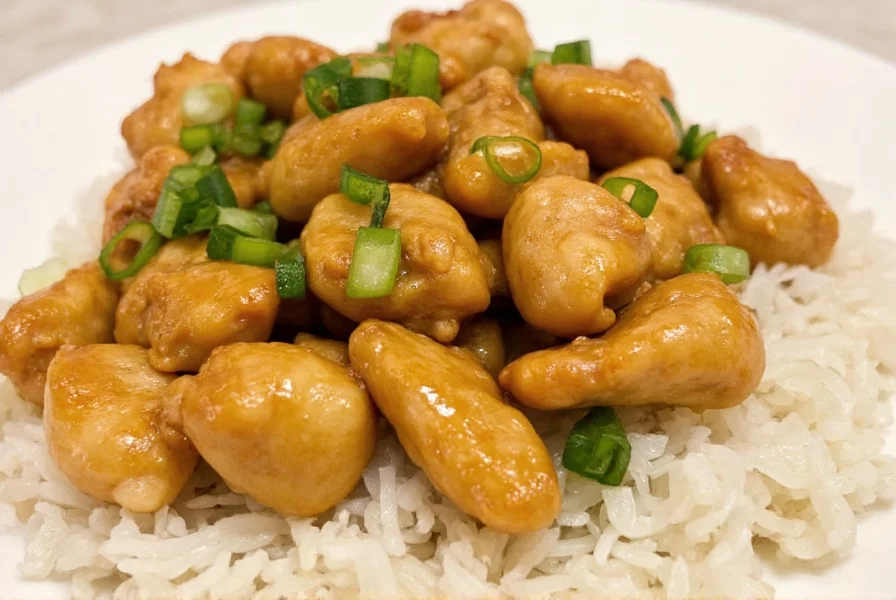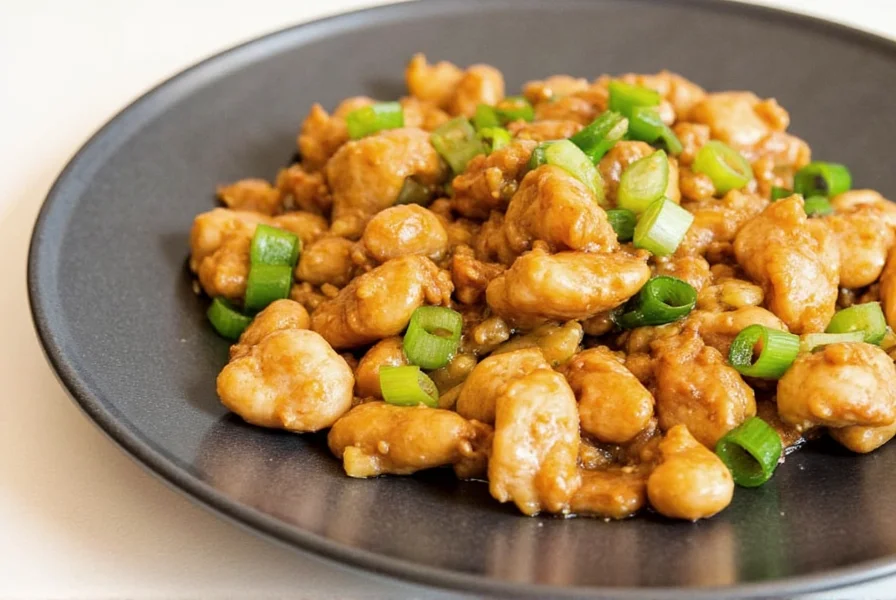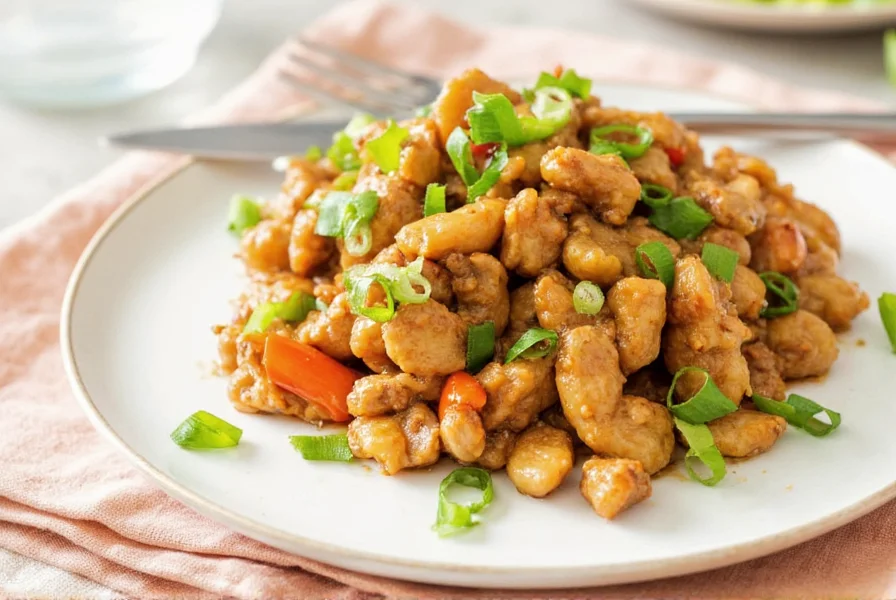Known as cong you ji in Mandarin, this beloved dish has become a staple in Chinese restaurants worldwide while remaining accessible for home cooks. What makes ginger scallion chicken special is its elegant simplicity—few ingredients working in perfect harmony to create a dish greater than the sum of its parts.
The Cultural Significance of Ginger Scallion Chicken
This dish exemplifies the Cantonese culinary philosophy of "fresh ingredients, minimal processing." Dating back to Guangdong province, ginger scallion chicken showcases how Chinese cuisine elevates humble ingredients through precise technique. Unlike many stir-fries that rely on heavy sauces, this preparation allows the natural chicken flavor to shine while the ginger and scallions provide aromatic complexity without overwhelming heat.
Essential Ingredients Breakdown
The magic of authentic ginger scallion chicken lies in ingredient quality and proper preparation. Each component serves a specific purpose in creating the dish's signature flavor profile.
| Ingredient | Function | Substitution Options |
|---|---|---|
| Chicken thighs | Superior flavor and moisture retention | Breast (less ideal), turkey cutlets |
| Fresh ginger | Provides bright, clean heat and aroma | Ginger paste (less ideal), galangal |
| Scallions | Onion-like sweetness with grassy notes | Chives, leeks (different flavor profile) |
| Shaoxing wine | Depth and complexity without alcohol taste | Dry sherry, apple juice + vinegar |
Equipment Essentials for Perfect Results
While you can prepare ginger scallion chicken with basic kitchen tools, certain equipment makes achieving restaurant-quality results more consistent:
- Carbon steel or cast iron wok - Provides superior heat retention for proper searing
- Sharp chef's knife - Essential for properly julienning ginger into fine matchsticks
- Mandoline slicer (optional) - Creates uniform ginger and scallion cuts
- Wok spatula - Curved design works perfectly with wok shape
Step-by-Step Preparation Guide
Follow these professional techniques to master ginger scallion chicken at home. The entire process takes approximately 30 minutes from start to finish.
Marinating the Chicken
Proper marination is crucial for tender, flavorful results. Combine 1½ pounds boneless chicken thighs (cut into 1-inch pieces) with:
- 1 tablespoon Shaoxing wine
- 1 teaspoon light soy sauce
- ½ teaspoon cornstarch
- ¼ teaspoon sesame oil
- Pinch of white pepper
Mix gently until evenly coated, then refrigerate for 15-20 minutes. Avoid over-marinating as the soy sauce can begin to "cook" the chicken.
Preparing the Aromatics
The ginger-to-scallion ratio makes or breaks authentic ginger scallion chicken. You'll need:
- 3 ounces fresh ginger (about 1 cup julienned)
- 8 scallions, white and green parts separated
Cut the ginger into fine matchsticks (about 2 inches long and 1/16 inch thick). Slice the white parts of scallions on a diagonal into 2-inch pieces, keeping the green parts whole for garnish.
Stir-Frying Technique
Heat your wok over high heat until smoking hot, then add 2 tablespoons peanut oil. Follow these critical steps:
- Add marinated chicken in a single layer and sear without stirring for 1 minute
- Flip chicken pieces and cook 30 seconds until lightly browned
- Add ginger and white scallion parts, stir-frying 30 seconds until fragrant
- Pour in sauce mixture (2 tablespoons light soy, 1 tablespoon dark soy, 1 tablespoon Shaoxing wine, ½ cup chicken stock)
- Cook 1-2 minutes until sauce thickens and coats chicken
- Finish with green scallion tops and sesame oil
The entire stir-frying process should take no more than 4 minutes to maintain chicken tenderness. Overcooking is the most common mistake when preparing easy ginger scallion chicken recipe variations.

Troubleshooting Common Issues
Even experienced cooks encounter challenges with this deceptively simple dish. Here's how to solve frequent problems:
- Soggy chicken - Wok not hot enough before adding ingredients. Always heat until smoking
- Bitter ginger - Ginger cut too thick or overcooked. Julienne finely and add later in process
- Sauce too thin - Insufficient cornstarch or too much liquid. Use proper 1:10 cornstarch-to-liquid ratio
- Dry chicken - Overcooking or using breast meat. Thighs retain moisture better
Serving Traditions and Pairings
Authentic ginger scallion chicken should be served immediately over steamed jasmine rice. The traditional presentation includes:
- Rice in wide, shallow bowl
- Chicken arranged neatly on top
- Extra sauce spooned around (not over) chicken
- Garnished with additional green scallion slices
Complementary side dishes include:
- Stir-fried bok choy with garlic
- Cucumber salad with sesame
- Simple egg drop soup
Regional Variations to Explore
While the Cantonese version remains most popular, regional adaptations offer interesting twists on traditional ginger scallion chicken technique:
- Sichuan style - Adds a teaspoon of chili oil for subtle heat
- Hainanese adaptation - Served with ginger-scallion oil over poached chicken
- Modern fusion - Incorporates citrus zest for brightness
- Dietary modifications - Gluten-free tamari substitution, reduced-sodium versions
Storage and Reheating Best Practices
While ginger scallion chicken tastes best fresh, proper storage maintains quality for leftovers:
- Refrigerate in airtight container for up to 3 days
- Freeze for up to 2 months (without rice)
- Reheat gently in skillet with teaspoon of water
- Avoid microwave reheating which makes chicken rubbery
When reheating ginger scallion chicken without wine originally used in preparation, add a splash of rice vinegar to refresh the flavors. The ginger aroma will diminish over time, so consider adding fresh ginger matchsticks when reheating.

Nutritional Profile and Dietary Considerations
A standard serving (4 ounces chicken with sauce, no rice) contains approximately:
- 280 calories
- 18g protein
- 12g fat (mostly unsaturated)
- 15g carbohydrates
- 2g fiber
For healthier ginger scallion chicken preparation, reduce sodium by using low-sodium soy sauce and increasing ginger quantity to compensate for flavor. The dish naturally contains no added sugars when prepared traditionally.











 浙公网安备
33010002000092号
浙公网安备
33010002000092号 浙B2-20120091-4
浙B2-20120091-4